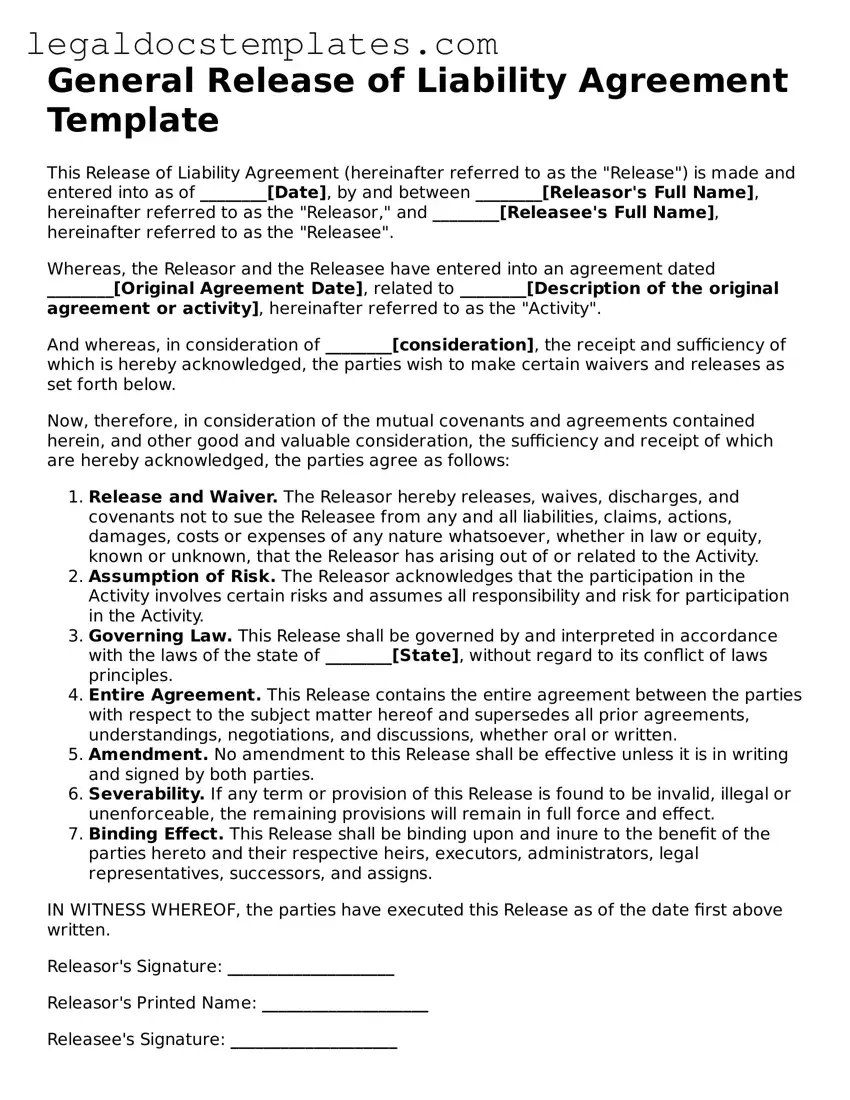General Release of Liability Agreement Template
This Release of Liability Agreement (hereinafter referred to as the "Release") is made and entered into as of ________[Date], by and between ________[Releasor's Full Name], hereinafter referred to as the "Releasor," and ________[Releasee's Full Name], hereinafter referred to as the "Releasee".
Whereas, the Releasor and the Releasee have entered into an agreement dated ________[Original Agreement Date], related to ________[Description of the original agreement or activity], hereinafter referred to as the "Activity".
And whereas, in consideration of ________[consideration], the receipt and sufficiency of which is hereby acknowledged, the parties wish to make certain waivers and releases as set forth below.
Now, therefore, in consideration of the mutual covenants and agreements contained herein, and other good and valuable consideration, the sufficiency and receipt of which are hereby acknowledged, the parties agree as follows:
- Release and Waiver. The Releasor hereby releases, waives, discharges, and covenants not to sue the Releasee from any and all liabilities, claims, actions, damages, costs or expenses of any nature whatsoever, whether in law or equity, known or unknown, that the Releasor has arising out of or related to the Activity.
- Assumption of Risk. The Releasor acknowledges that the participation in the Activity involves certain risks and assumes all responsibility and risk for participation in the Activity.
- Governing Law. This Release shall be governed by and interpreted in accordance with the laws of the state of ________[State], without regard to its conflict of laws principles.
- Entire Agreement. This Release contains the entire agreement between the parties with respect to the subject matter hereof and supersedes all prior agreements, understandings, negotiations, and discussions, whether oral or written.
- Amendment. No amendment to this Release shall be effective unless it is in writing and signed by both parties.
- Severability. If any term or provision of this Release is found to be invalid, illegal or unenforceable, the remaining provisions will remain in full force and effect.
- Binding Effect. This Release shall be binding upon and inure to the benefit of the parties hereto and their respective heirs, executors, administrators, legal representatives, successors, and assigns.
IN WITNESS WHEREOF, the parties have executed this Release as of the date first above written.
Releasor's Signature: ____________________
Releasor's Printed Name: ____________________
Releasee's Signature: ____________________
Releasee's Printed Name: ____________________
